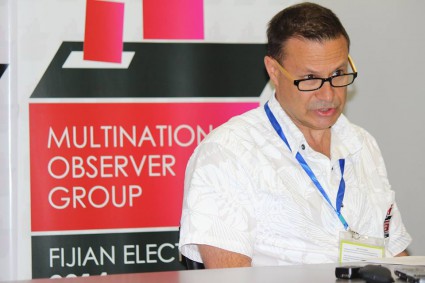
Vijay Narayan
SUVA (FijiVillage.com/Pacific Media Watch): Fiji local media displayed both instances of neutrality and partiality during the final weeks of the general election campaign last September and some news organisations appeared to exhibit political bias, says the Multinational Observer Group.
The MOG said that the effectiveness of the media to provide informed choice on Election Day varied greatly between the urban and rural areas.
It said voters in the urban areas had access to a reasonably diverse range of media.
In September 2014, a total of 34 media outlets were officially registered under the Media Industry Development Authority (MIDA), including newspapers, magazines, radio stations, TV stations and social media.
It said radio was the most important source of information for many Fijians and played a crucial role in distributing information about both the political and administrative aspects of the election.
The report said the coverage of the electoral campaign in the final weeks before the election included instances of both neutrality and partiality among the local media.
It said that while efforts were made by some domestic media like Communications Fiji Limited and Fiji Television to allocate an equitable amount of airtime to the different candidates and political leaders through special election programmes, some media organisations appeared to exhibit political biases.
The report said that political parties were able to mobilise and candidates were able to campaign prior to the election.
It also mentioned the special talkback on Communications Fiji Limited (CFL) stations which featured FijiFirst Leader Voreqe Bainimarama - now the elected prime minister - and opposition SODELPA Leader Ro Teimumu Kepa in a live debate three days before the election, which was broadcast widely on radio.
This work is licensed under a Creative Commons Attribution-NonCommercial 3.0 New Zealand Licence.




